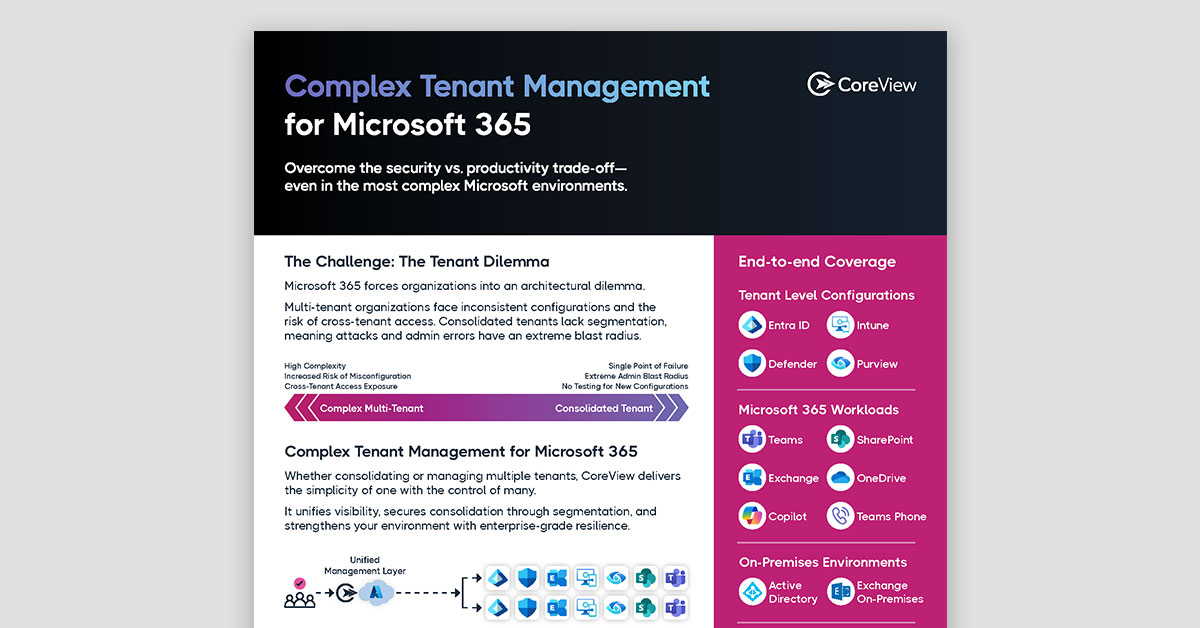Microsoft 365 powers “doing business.”
It’s no surprise that Microsoft’s business is booming:
- Its revenue has grown from $93.6B in 2015 to more than $211B in 2023.
- There are 345M+ M365 seats and 550M+ Entra ID users worldwide.
- 90% of Fortune 500 today are using Teams.
- There are over 300+ million monthly Teams users.
- Over 200PBs are added to SharePoint monthly.
With these levels of adoption, it’s safe to say that Microsoft powers almost all work that’s happening in 2024. In fact, organizations are so reliant on M365 that an hour’s downtime could cost a whopping 7 figures. Now, imagine a scenario where Microsoft 365 becomes inaccessible for 24 hours...
The Global Impact of Microsoft 365 Downtime
For organizations worldwide, a global M365 failure isn’t just a minor inconvenience. It creates chaos, halted productivity, and squandered opportunities.
This potential for disruption not only underscores the suite's role in day-to-day business operations, but it also highlights the need for high availability in Microsoft 365.
1. Business Disruption
A 24-hour blackout of Microsoft 365 would severely impede productivity across a variety of sectors. Whether your organization usesM365 or not, it’s guaranteed that some of your vendors, consultants, partners,and customers rely on its applications.
That means tasks dependent on M365 in any way would accumulate, leading to operational delays and a backlog that could take days to resolve.
For businesses, especially within the service sector, this scenario could result indirect financial losses and client dissatisfaction due to unmet deadlines.
2. Communication Breakdown
Internal and external communication relies on the availability of Microsoft Outlook and Teams. An outage would interrupt communication, prevent coordination, and delay decision-making.
Without access to emails or scheduled meetings, the connection between teams and clients would be severed, potentially damaging those relationships.
3. Financial Impact
The financial consequences of a Microsoft blackout would be immediate. Businesses would encounter non-productive paid hours. Microsoft could witness a temporary dip in stock value as investor confidence diminishes.These ripple effects might even affect market perceptions, revealing vulnerabilities within IT infrastructures.
4. Educational Setbacks
Educational entities depending on Microsoft 365 for teaching and administrative tasks would face push back and disruptions. Classes might be canceled or poorly managed. Not to mention, assignments and grading would be interrupted,negatively affecting students and the institution’s operations.
5. Security and Compliance Risks
An outage could also elevate serious data security concerns, especially if stemming from a cyberattack. This scenario might lead to breaches of sensitive data and compliance violations, potentially resulting in legal repercussions and substantial fines.
6. Damaged Reputations
Such an outage would cast doubts on Microsoft's reliability as a service provider, possibly impacting its market position and customer loyalty over the long term. Organizations struggling to maintain normal operations could also experience reputational damage, eroding client trust and their competitive stance.
How Downtime Impacts Your Organization
Now imagine a blackout that only affects your tenant. The rest of the world continues to operate normally; meanwhile, you are stuck waiting for someone to restore service. Your competitors certainly won’t miss this opportunity to grab market share while you wait.
Even worse—what if the cause of that downtime was preventable? What if it’s due to human error? Or because of an outdated app that still has access to your environment?Or, what if an in-house PowerShell script accidentally changed the wrong configuration? Or simply an admin that modified a conditional access policy blocking access completely for all employees? Will you be prepared?
How to Prepare for Microsoft 365 Downtime
Mitigating the risks of downtime means more than just disruption prevention. CIOs and CISOs must prioritize end-to-end Microsoft 365 governance, security, and automation to maintain stability. That includes:
- Preventing dangerous tenant misconfigurations
- Finding and fixing critical collaboration and identity risks
- Minimizing privilege exposure
With a Microsoft 365 management solution, you can accomplish this by automating tenant configurations, detecting configuration drift, auto-remediating Teams,SharePoint, and Exchange security risks, and more.
How to Automate M365 Tenant Configurations with CoreView
The easiest way to guarantee stability? With CoreView’s Tenant Configuration Manager for Microsoft 365.
In addition to automating, monitoring, and remediating configurations, organizations using CoreView can easily rollback dangerous misconfigurations:
- Wrong conditional access policy enabled? One click and service is restored.
- User yelling at support that SharePoint access is broken? Click—and service will be restored.
- Unwanted user access to CEO mailbox detected? Press a button and service is auto-restored.
Keep human errors to a bare minimum.
For organizations relying on Microsoft 365, secure and govern your M365 environment to guarantee stability. Get started today with the free M365 Governance Starter Kit and scan your M365 tenant for misconfigurations.
Or, click through our interactive guide to see M365 security, governance, and automation made easy with CoreView.



